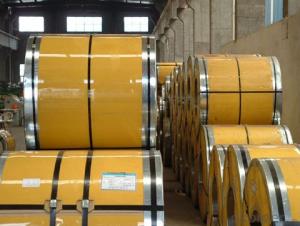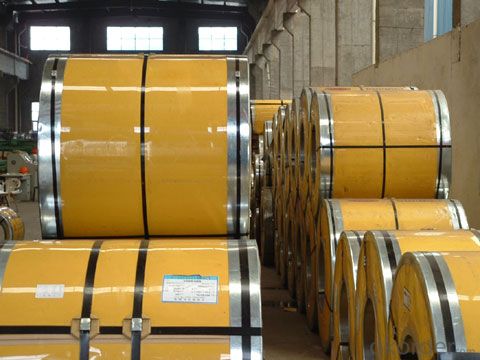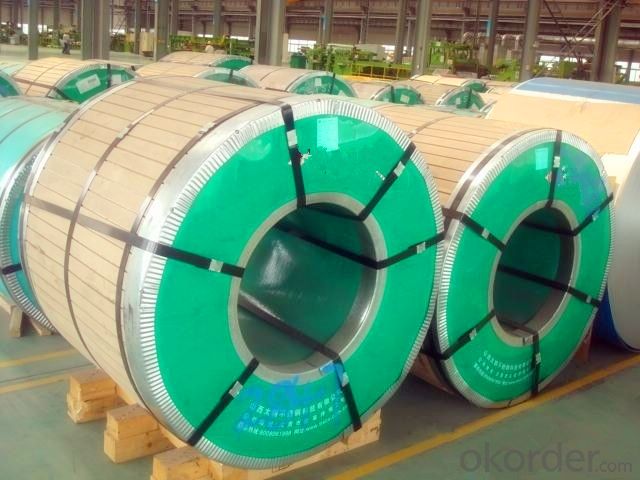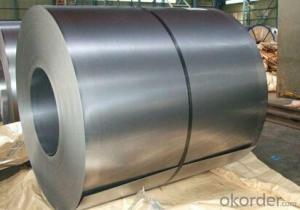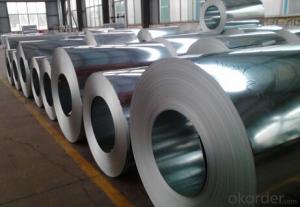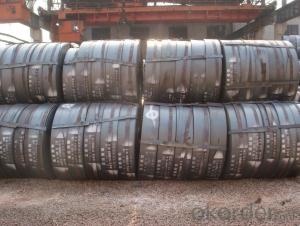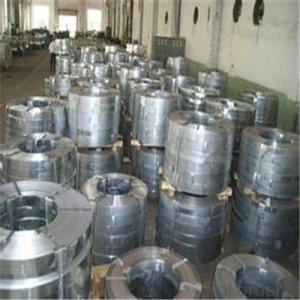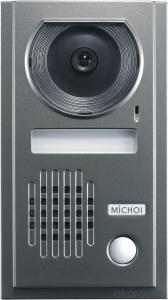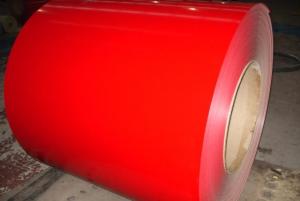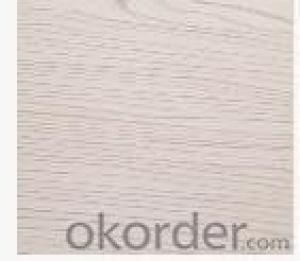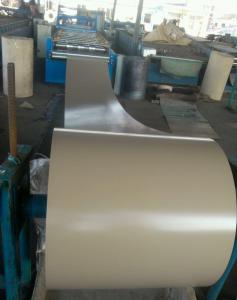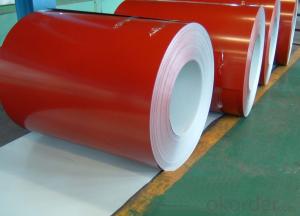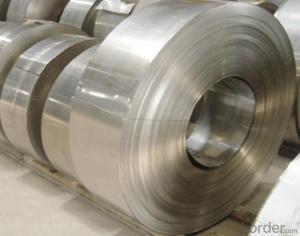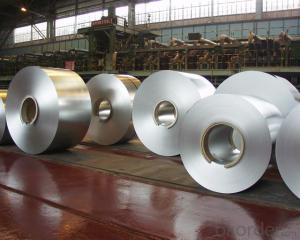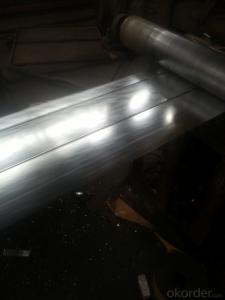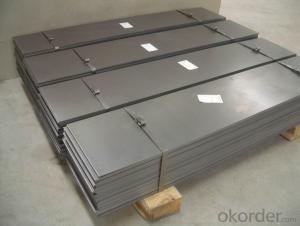PPGI/PPGL steel Coils Or Sheets With Good Quality
- Loading Port:
- Qingdao
- Payment Terms:
- TT OR LC
- Min Order Qty:
- 25 m.t.
- Supply Capability:
- 30000 m.t./month
OKorder Service Pledge
OKorder Financial Service
You Might Also Like
PPGI/PPGL steel Coils Or Sheets With Good Quality
1.Structure of PPGI/PPGL steel Coils Or Sheets With Good Quality
1PPGI/PPGL steel Coils Or Sheets With Good Quality is coated with organic layer, which provides higher anti-corrosion property and a longer lifespan than that of galvanized steel sheets.
2. The base metals for Color Coated Steel Coil consist of cold rolled, HDG electro-galvanized and hot-dip alu-zinc coated steel. The finish coats of Color Coated Steel Coil can be classified into groups as follows: polyester, silicon modified polyesters, polyvinylidene fluoride, high-durability polyester, etc.
3. The production process has evolved from one-coating-and-one-baking to double-coating-and-double-baking, and even three-coating-and-three-baking.
4. The color of the Color Coated Steel Coil has a very wide selection, like orange, cream-colored, dark sky blue, sea blue, bright red, brick red, ivory white, porcelain blue, etc.
5. The Color Coated Steel Coil can also be classified into groups by their surface textures, namely regular prepainted sheets, embossed sheets and printed sheets.
2.Main Features of PPGI/PPGL steel Coils Or Sheets With Good Quality.
1) Rust-proof
2) Water-proof
3)Durable using
3. PPGI/PPGL steel Coils Or Sheets With Good Quality Images

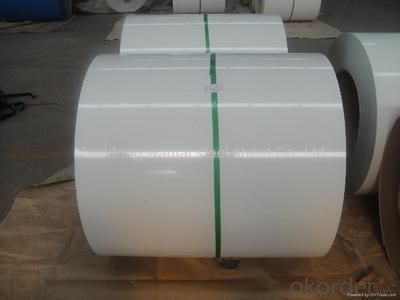
4. PPGI/PPGL steel Coils Or Sheets With Good Quality Specification
1)Based raw material: Hot rolled steel coils or Cold rolled steel coils
2) Thickness
3) Width
4)Coating mass
5) Spangle
6)Surface treatment
7)Coil inner diameter
8)Painting kind
9)Painting color
10)Painting thickness
5.FAQ of PPGI/PPGL steel Coils Or Sheets With Good Quality
We have organized several common questions for our clients,may help you sincerely:
①How about your company?
A world class manufacturer & supplier of castings forging in carbon steel and alloy steel,is one of the large-scale professional investment casting production bases in China,consisting of both casting foundry forging and machining factory. Annually more than 8000 tons Precision casting and forging parts are exported to markets in Europe,America and Japan. OEM casting and forging service available according to customer’s requirements.
②How to guarantee the quality of the products?
We have established the international advanced quality management system,every link from raw material to final product we have strict quality test;We resolutely put an end to unqualified products flowing into the market. At the same time, we will provide necessary follow-up service assurance.
③Could I have your range of the products?
prepainted galvanized steel coils/ppgi/ppgl
Product | PPGI/PPGL |
Capacity | 30,000 tons/month |
Base material | Hot dipped galvanized steel |
Thickness | 0.12-0.80mm |
Width | 600-1250mm(according to your need) |
Coil Weight | 3-6tons |
Quality | SGCC, DX51D |
Color | RAL No. or customers samples’ color |
Zinc-coating | 60g/m2-180g/m2 |
Coil ID | 508mm/610mm |
Technique | Cold rolled—hot dipped galvanized—color coated |
Painting | Top painting:15~25μm Back painting: 6~10μm |
Tolerance | Thickness: +/-0.02mm Width:+/-2mm |
Shipment time | within 15-45 workdays |
Payment | T/T, L/C at sight |
Packing | Standard export packing |
The special order can be negotiated. | |
- Q: Are steel strips used in the aerospace industry?
- Steel strips are a common material in the aerospace industry due to their versatility and excellent mechanical properties. They find application in various aerospace manufacturing processes, such as constructing aircraft frames, structural components, and wing spars. The use of steel strips enhances the strength and rigidity of aerospace vehicles, ensuring their structural integrity and safety. Moreover, these strips exhibit remarkable resistance to corrosion and temperature fluctuations, making them suitable for extreme environmental conditions encountered in the aerospace industry. Thus, steel strips are crucial in aerospace manufacturing, widely recognized for their durability, strength, and reliability.
- Q: How are steel strips used in the production of tools?
- Steel strips are commonly used in the production of tools as they provide strength, durability, and flexibility. These strips are often shaped, cut, and molded to create various tool components such as blades, cutting edges, and handles. Additionally, steel strips can be hardened and tempered to enhance their performance and increase their resistance to wear and tear. Overall, steel strips play a crucial role in ensuring the quality and functionality of tools used in various industries.
- Q: What are the advantages of using steel strips in various industries?
- Using steel strips in various industries offers several advantages. Firstly, steel strips provide exceptional strength and durability. Steel is renowned for its high tensile strength, making it an ideal choice for applications that require resistance to heavy loads, impact, and wear. This quality makes steel strips suitable for industries like construction, automotive, and aerospace, where reliable and long-lasting materials are essential. Secondly, steel strips possess excellent formability. They can be easily shaped and molded into various geometries and sizes, making them versatile for a wide range of applications. This flexibility empowers manufacturers to create complex and intricate designs, ensuring that steel strips can meet the specific requirements of different industries. Another advantage of steel strips lies in their corrosion resistance. Steel can be treated with coatings or alloys that offer protection against rust and corrosion, thereby extending the material's lifespan. This characteristic is particularly vital in industries where exposure to moisture, chemicals, or harsh environments is common, such as marine, oil and gas, and infrastructure. Furthermore, steel strips offer thermal conductivity and electrical resistance, making them suitable for industries involved in heat transfer and electrical conduction, such as electronics and power generation. The ability of steel strips to efficiently conduct heat and electricity ensures reliable performance and safety in these applications. Lastly, steel strips are widely available and cost-effective. Steel is one of the most commonly used materials globally, resulting in a well-established global supply chain. This availability makes steel strips easily accessible and affordable for industries of all sizes, providing a cost-effective solution without compromising quality or performance. In conclusion, the advantages of using steel strips in various industries encompass exceptional strength, formability, corrosion resistance, thermal conductivity, electrical resistance, and cost-effectiveness. These attributes make steel strips a popular choice across diverse sectors, contributing to their widespread usage and importance in modern manufacturing processes.
- Q: What are the different methods for slitting steel strips?
- There are several different methods for slitting steel strips, each with its own advantages and limitations. The choice of method depends on factors such as the desired strip width, thickness, and material properties. Here are some common methods used in the steel industry: 1. Rotary Shear Slitting: This method involves using rotating circular blades to cut the steel strip. The blades are positioned in a way that they create a shearing action, resulting in a clean and precise cut. Rotary shear slitting is capable of achieving high production speeds and is suitable for thinner gauge materials. 2. Loop Slitting: In loop slitting, the steel strip is fed through a loop control system that maintains constant tension. The strip is then cut using either a rotary shear or straight knife slitting method. Loop slitting is often used for thicker gauge materials or when high strip tension is required. 3. Crush Slitting: Crush slitting involves passing the steel strip through a set of rollers that apply pressure to crush and cut the material. This method is commonly used for cutting softer materials, as it minimizes the risk of fraying or edge deformation. However, crush slitting may not be suitable for thicker or harder steel strips. 4. Laser Slitting: Laser technology is increasingly being used for slitting steel strips. A high-powered laser beam is directed onto the strip, melting and vaporizing the material along the desired cutting path. Laser slitting offers precise and narrow cuts, making it ideal for high-precision applications. However, it can be slower and more expensive than other methods. 5. Guillotine Slitting: Guillotine slitting involves using a straight knife or blade to cut the steel strip. The blade is positioned vertically and moves in a downward motion to shear the material. Guillotine slitting is commonly used for thicker gauge materials or when a clean and straight edge is required. 6. Score Slitting: Score slitting involves using a blade or wheel to score the surface of the steel strip without fully cutting through. The strip is then bent or flexed at the scored line to complete the cut. Score slitting is often used for thin gauge materials or when minimizing edge deformation is important. Each of these methods has its own advantages and limitations, and the choice of method depends on the specific requirements of the steel strip slitting process. Manufacturers and steel processors carefully consider factors such as strip thickness, width, material properties, desired edge quality, production speed, and cost when selecting the most appropriate method for their application.
- Q: How are steel strips used in the production of household tools?
- Due to their durability and strength, steel strips find widespread use in the manufacturing of household tools. These strips serve as raw materials for various tools such as screwdrivers, wrenches, pliers, and hammers. Typically, steel strips are cut into specific lengths and widths before undergoing further processing to shape them into the desired tools. Manufacturers can bend, stamp, or forge these strips to create the necessary components for the tools. For instance, the strips may be bent to form the handles of screwdrivers or pliers, or they may be stamped into the jaws of a wrench. The use of steel strips in tool production offers several advantages. Firstly, steel is a robust material capable of withstanding significant force and pressure, making it ideal for heavily used tools. Secondly, steel exhibits high resistance to corrosion, ensuring that the tools remain in excellent condition even in harsh environments. Moreover, steel strips can be easily molded and shaped, allowing manufacturers to create tools with precise dimensions and intricate designs. This versatility in shaping steel strips enables the production of tools with ergonomic handles, textured surfaces for enhanced grip, and various other features that improve user comfort and efficiency. In conclusion, steel strips play a vital role in the production of household tools, providing durability, strength, and corrosion resistance. Their versatility allows manufacturers to create tools with precise dimensions and designs, resulting in high-quality and dependable products for everyday use.
- Q: Are steel strips suitable for making jewelry?
- Yes, steel strips can be suitable for making jewelry. Steel strips are durable, versatile, and can be shaped into various designs. However, they may not be as popular as other materials like gold or silver due to their industrial aesthetic.
- Q: How are steel strips tested for decarburization?
- Steel strips are tested for decarburization using several methods to ensure the quality and integrity of the material. One common method is the use of visual inspection, where the surface of the steel strip is examined for any signs of decarburization such as discoloration or roughness. This visual inspection can be done manually or using automated systems. Another method is known as microhardness testing, which measures the hardness of the steel strip at different depths. Decarburization typically results in a decrease in hardness, so by comparing the hardness at different depths, it is possible to assess the extent of decarburization. Additionally, chemical analysis can be performed to determine the carbon content of the steel strip. Decarburization involves the loss of carbon from the surface layer, so by comparing the carbon content at different depths, the extent of decarburization can be determined. Metallographic examination is another technique used to test for decarburization. This involves preparing a cross-section of the steel strip and examining it under a microscope. The depth and severity of decarburization can be assessed by observing the presence of a decarburized layer and its thickness. Finally, non-destructive testing methods such as ultrasonic or eddy current testing can also be used to detect and assess decarburization in steel strips. These methods involve the use of sound waves or electromagnetic fields to detect any irregularities or changes in the material's composition. Overall, a combination of visual inspection, microhardness testing, chemical analysis, metallographic examination, and non-destructive testing is typically employed to comprehensively test steel strips for decarburization. This ensures that the material meets the required standards and is suitable for its intended application.
- Q: Can steel strips be used in the production of bicycle frames?
- Bicycle frames can be produced using steel strips, which are frequently utilized in this manufacturing process due to their strength, durability, and affordability. By shaping and welding steel strips, it becomes possible to construct the primary structure of the frame, establishing a sturdy and inflexible foundation. The employment of steel strips enables the attainment of various shapes and sizes, facilitating design flexibility and customization. Furthermore, steel frames deliver an exceptional riding experience by absorbing vibrations and providing a smooth and comfortable journey. In summary, steel strips are a perfect selection for the production of bicycle frames as they encompass a blend of strength, durability, and adaptability.
- Q: How are steel strips tempered for improved toughness?
- Steel strips are tempered for improved toughness through a process known as heat treatment. This process involves heating the steel strips to a specific temperature, typically between 300-700 degrees Celsius, and then cooling it rapidly. This rapid cooling is done by quenching the steel in oil, water, or air, depending on the desired level of toughness. During the heating stage, the steel strips undergo a transformation known as austenitization, where the crystal structure of the steel changes. This results in the formation of a hard and brittle phase called martensite. While martensite provides high hardness, it lacks toughness and is prone to cracking under stress. To improve toughness, the steel strips are then subjected to the tempering process. During tempering, the steel strips are reheated to a lower temperature, typically between 150-300 degrees Celsius, and held at that temperature for a specific duration of time. This allows the martensite to transform into a more ductile phase called tempered martensite. The tempering process helps to relieve internal stresses within the steel strips, reduce brittleness, and improve toughness and ductility. It also allows for the adjustment of the final mechanical properties based on the specific requirements of the application. Overall, steel strips are tempered for improved toughness by subjecting them to a carefully controlled heat treatment process, which transforms the hard and brittle martensite phase into a more ductile tempered martensite phase. This ensures that the steel strips possess the desired combination of hardness and toughness for various industrial applications.
- Q: How are steel strips coated with aluminum?
- Hot-dip aluminum coating or hot-dip aluminizing is a technique for coating steel strips with aluminum. In this process, the steel strip is immersed in a molten aluminum bath, which is often mixed with other elements to enhance its properties. Before the coating takes place, the steel strip undergoes cleaning and pre-treatment to ensure proper adhesion between the steel and the aluminum coating. The strip is then passed through rollers to remove any excess oil or debris. Once prepared, the strip is dipped into the molten aluminum bath. Careful immersion and controlled speed ensure an even and uniform coating. The aluminum adheres to the steel surface, forming a thin layer. After being withdrawn from the bath, the strip undergoes cooling, solidification, and quenching processes to ensure the durability and adhesion of the coating. Further processing, such as cutting, rolling, or shaping, is carried out based on the intended use. The hot-dip aluminum coating process offers several advantages for steel strips. It enhances corrosion resistance, making them suitable for harsh environments. It also improves the aesthetic appearance, providing a smooth and shiny surface. Additionally, the coating can enhance heat resistance, electrical conductivity, and reflectivity, depending on specific needs.
Send your message to us
PPGI/PPGL steel Coils Or Sheets With Good Quality
- Loading Port:
- Qingdao
- Payment Terms:
- TT OR LC
- Min Order Qty:
- 25 m.t.
- Supply Capability:
- 30000 m.t./month
OKorder Service Pledge
OKorder Financial Service
Similar products
Hot products
Hot Searches
Related keywords
